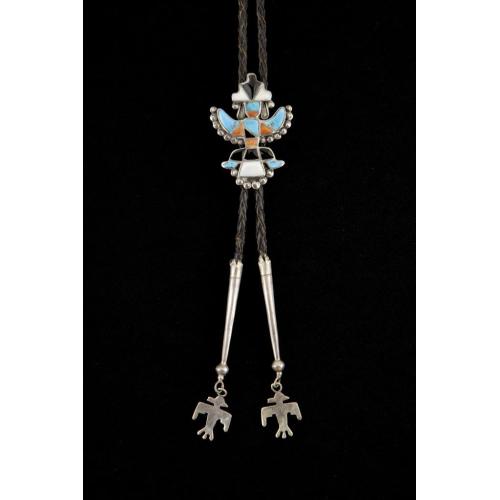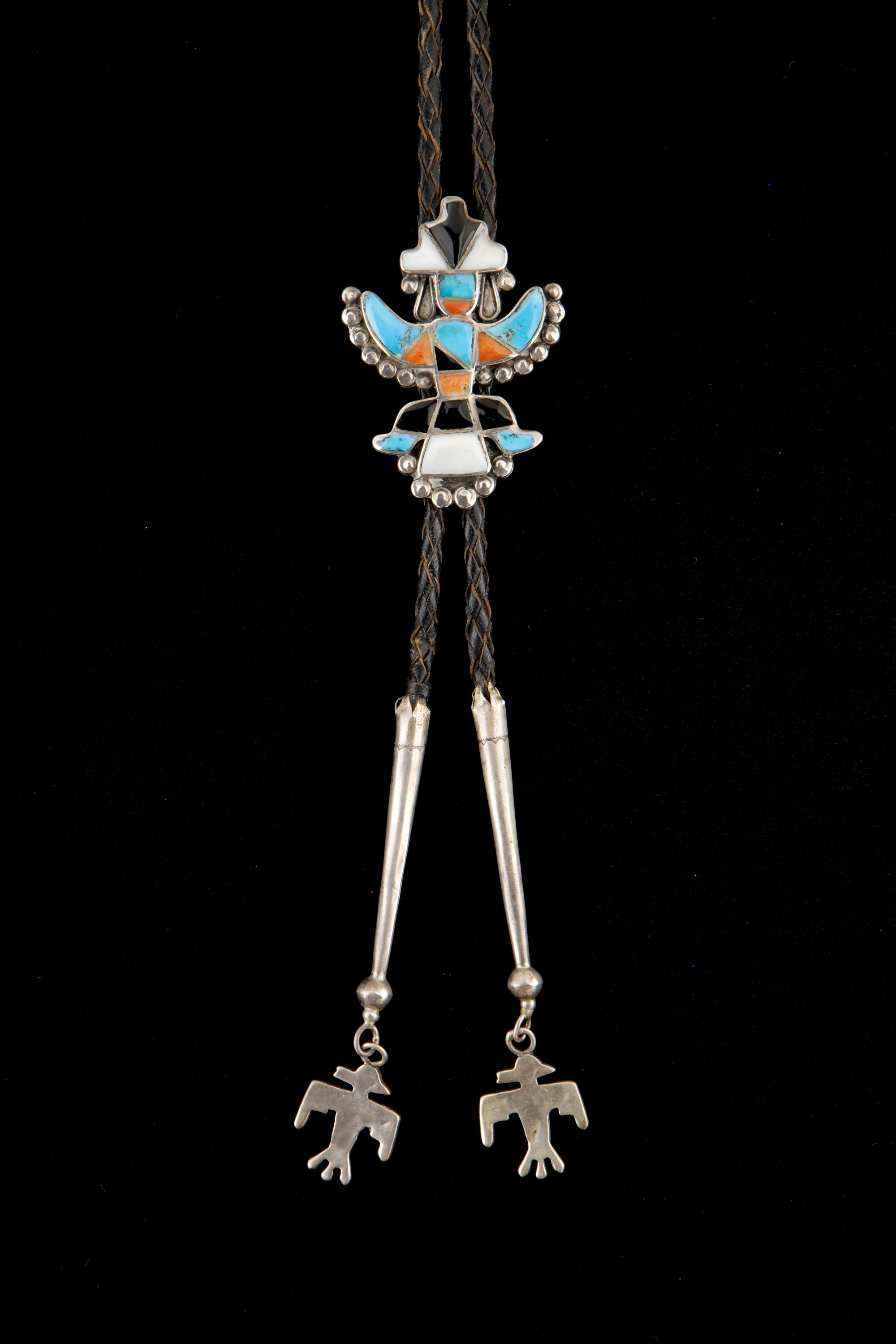
Photograph by Addison Doty. Copyright 2010 School for Advanced Research.
Bolo tie
Date: 1937-1940
Artist or Maker: Unknown
Dimensions:
Overall: 4 x 5.5 cm (1 9/16 x 2 3/16 in.)
Medium: turquoise | jet | spiny oyster | mother of pearl | silver | leather
Credit Line: Obtained for the collection, 1983.
Place Made:
Zuni Pueblo, McKinley County, New Mexico, Southwest, United States, North America
Object Number: SAR.1983-14-2
Not on view
Tribal Collection Review RemarksOctavius Seowtewa during collection review visit February 17 and 18, 2010 (Events Record “Collection Review: Zuni Tribe, Review 4”): This piece depicts Thunderbird. Thunderbird is a figure in Zuni stories. He is a being who helps people find their way. On the back, there is an engraved name and numbers: “Hildebrand 516-30-891.” Hildebrand may have been the name of the artist, the trader who sold the piece, or possibly of an owner. This should be researched. The engraving appears to have been done with a Dremel or similar tool. The materials used in this piece are silver, turquoise, jet, mother of pearl and spiny oyster. The catalog card states that shell and coral are used, but those are the mother of pearl and the spiny oyster.
[Subsequent research by IARC staff revealed that the envgraving on the back referred to a man named Eugene Hildebrand, who died in Arizona in August 1980. The SSN on the back of the piece was his, so he must have been an owner.]
Knife Wing is a figure in Zuni stories who helped the Zuni people find their homelands. Because he could fly he was able to help them find a good place to live. He is a symbol of strength and is associated with War Chiefs. He is also depicted on some types of altars. Knife Wing is always depicted as dressed very similarly to an Eagle Dancer. The difference between the two is that Knife Wing's face is different from an Eagle Dancer's face (for example, Knife Wing wears a round face with a cloud step headdress and the face doesn't include a beak). Though dressed much like an Eagle Dancer, Knife Wing is only a symbol and is not represented in dances. The Zuni name for Knife Wing is Achiyaladaba.
In Collection(s)
The Indian Arts Research Center, in collaboration with Native American community scholars, strives to present accurate collections records. Records may be updated as new information becomes available and is reviewed with the Native American community having cultural affinity to particular items. Please write to iarc@sarsf.org if you have questions or concerns related to the documentation.
